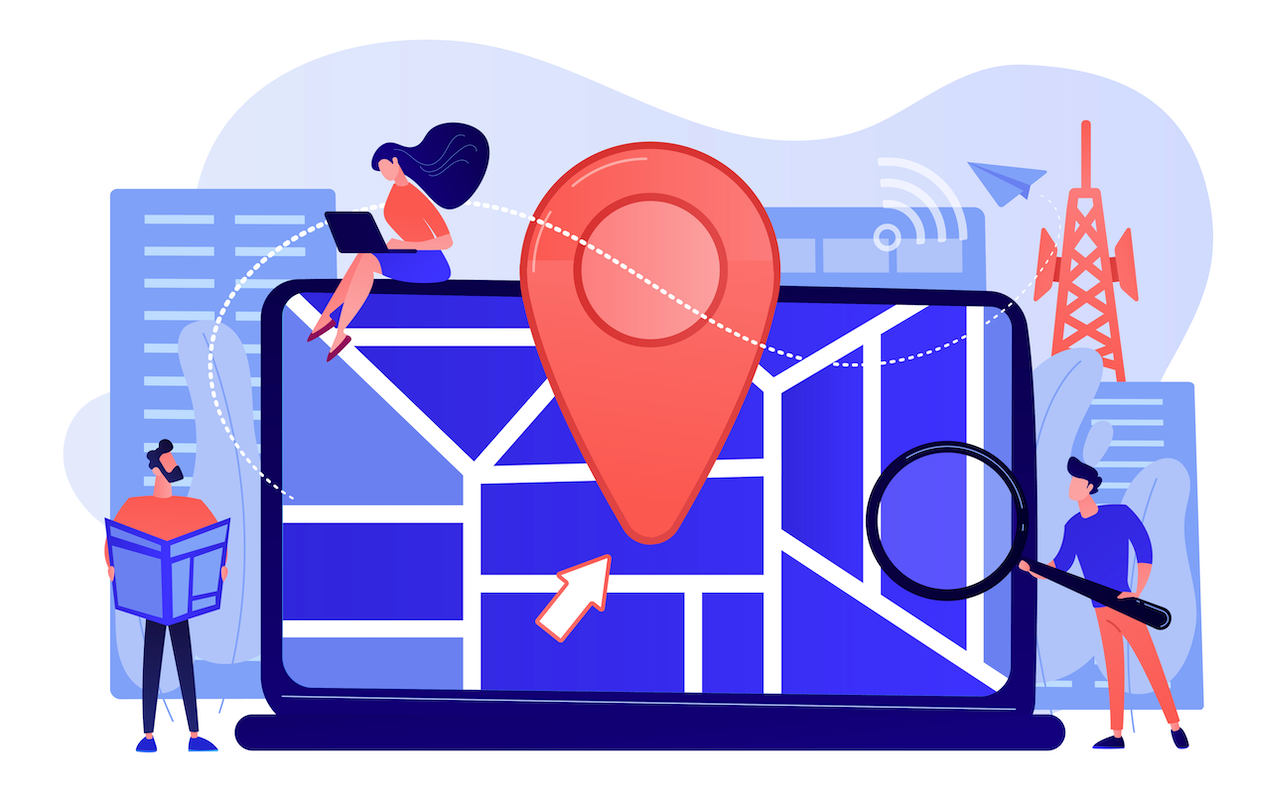
Ever posted a stunning vacation picture on social media, only to realize later that it might have given away more information than you intended? If so, you’re not alone. Millions of people unknowingly share their real-time locations through geotagging, putting their privacy and security at risk. But what exactly is geotagging, and how can you protect yourself? Let’s dive deep into this topic and explore ways to stay safe while enjoying the benefits of location-based services.
What is Geotagging and How Does It Work?
Geotagging is the process of adding geographical identification data—like latitude and longitude—to various types of media, such as photos, videos, and social media posts. It acts like a digital footprint, using GPS, Wi-Fi, and cell tower signals to determine and store location details. While this can be useful for organization and navigation, it also has significant privacy risks.
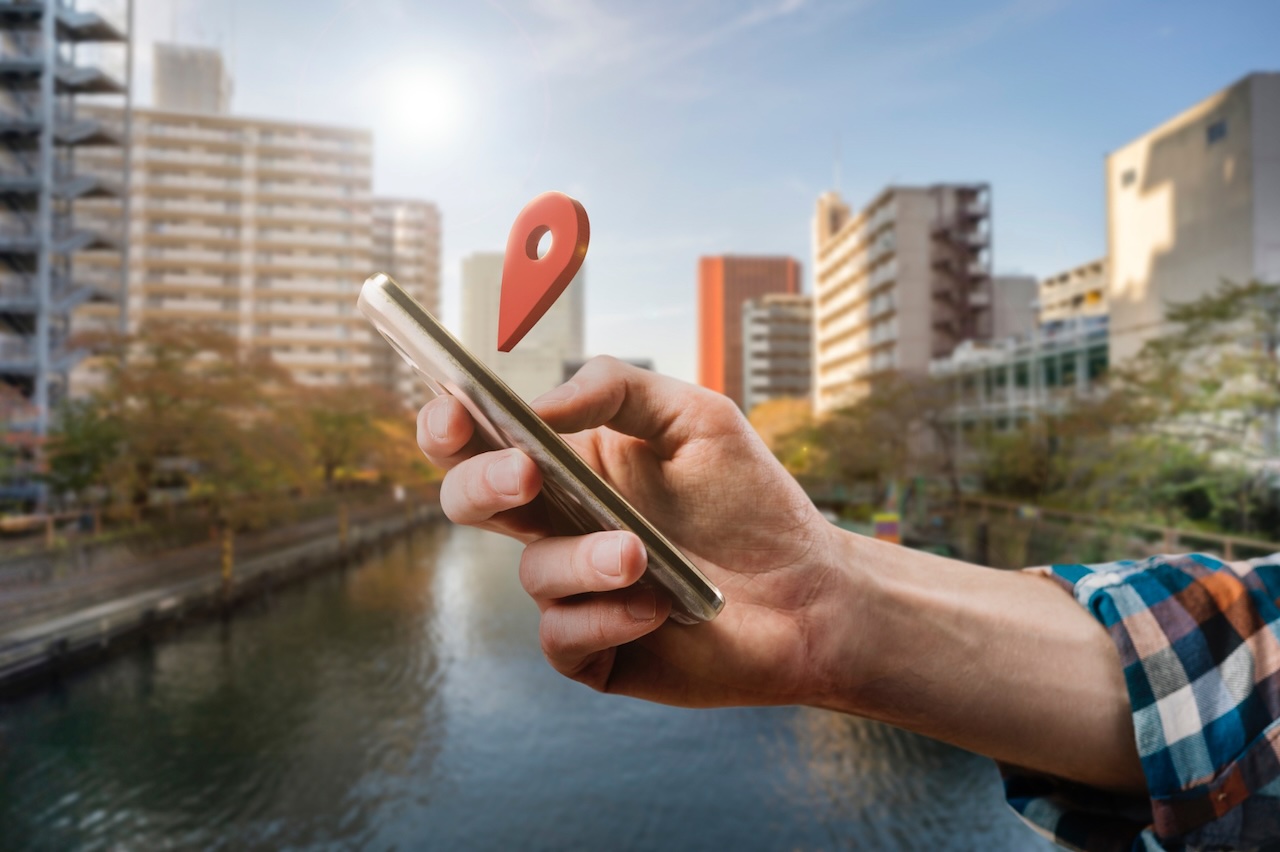
The Technical Definition of Geotagging
From a technical standpoint, geotagging involves embedding precise coordinates into a file’s metadata. Metadata is “data about data” and can include details such as:
- Date and time the photo was taken
- Camera model and settings
- Exact GPS coordinates of where the media was captured
For example, if you take a selfie at the Eiffel Tower and upload it to social media, the metadata stored in the image may reveal your exact location, sometimes without you even realizing it.
A study conducted by cybersecurity firm Kaspersky found that over 90% of smartphone users are unaware that photos they share online may contain geotagged metadata.
Devices and Platforms That Use Geotagging
Geotagging is embedded into many modern devices and platforms, including:
- Smartphones: iPhones and Android devices automatically tag media with location data if not disabled.
- Digital Cameras: Many DSLRs and action cameras, like GoPros, have built-in GPS for geotagging.
- Drones: DJI and other drone manufacturers often store GPS data in their photos and videos.
- Social Media Platforms: Apps like Instagram, Facebook, and Twitter allow users to tag locations in posts, making it easy for others to track their movements.
A 2023 report from Statista shows that 67% of social media users geotag their posts at least once a month, and 30% do it regularly without considering privacy risks.
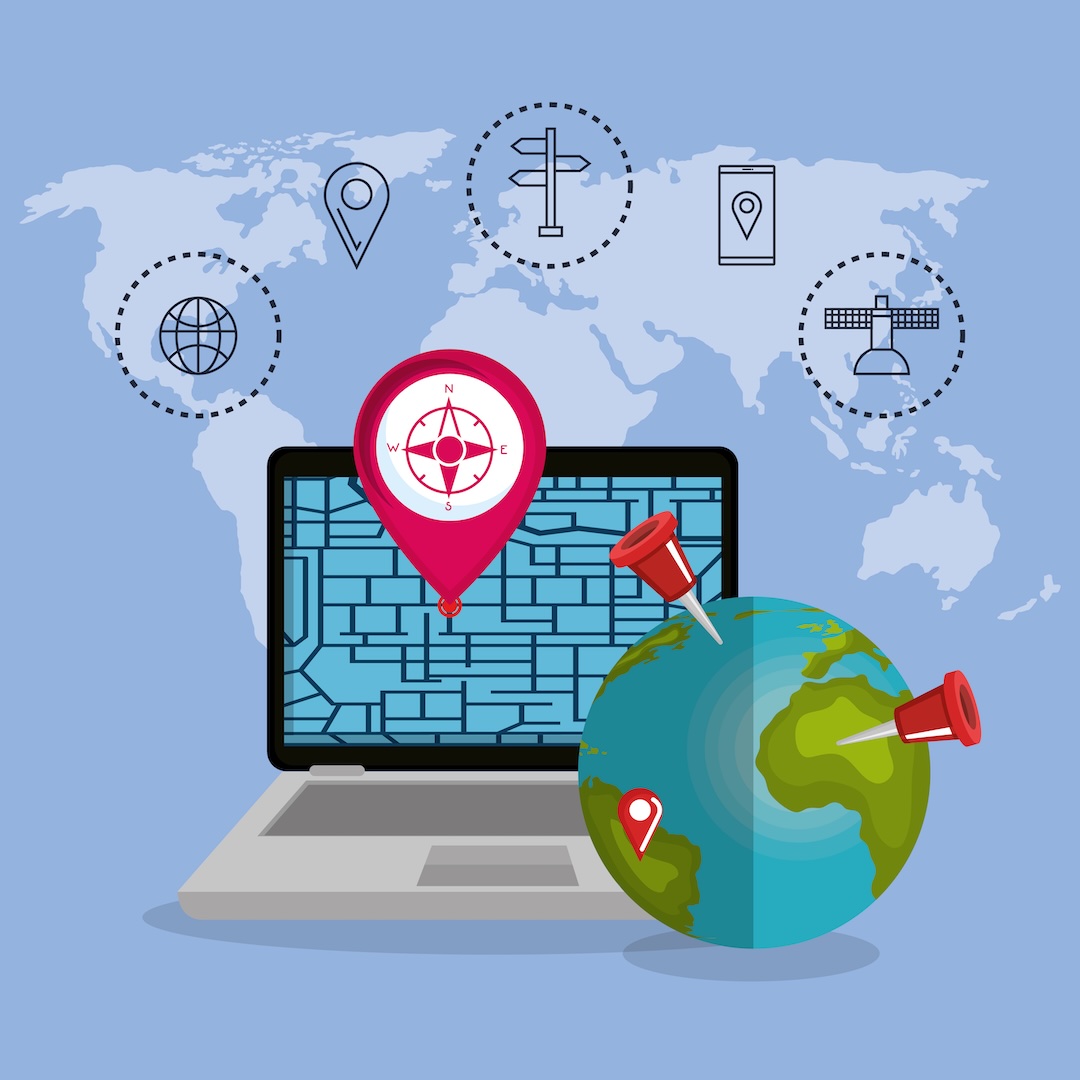
The Benefits of Geotagging
Geotagging is not inherently bad—it offers several advantages, such as:
- Photo Organization: Apps like Google Photos use geotagging to categorize images by location, making it easy to find vacation albums.
- Navigation and Location-Based Services: Maps, restaurant finders, and ride-sharing apps rely on geotagging to function effectively.
- Emergency Services: Geotagged calls to 911 help responders locate individuals in distress faster.
- Scientific Research and Journalism: Researchers and journalists use geotagging to document and verify events worldwide.
Despite these benefits, the risks associated with geotagging should not be overlooked.
The Privacy Risks of Geotagging
While geotagging has its uses, it can also expose personal information to unintended audiences. Some of the biggest risks include:
Stalking and Burglary
One of the most concerning dangers of geotagging is its potential for criminal activity. If someone can see where you frequently check in or post photos, they might be able to track your daily routines.
A 2021 study by the University of Illinois found that more than 75% of people who were victims of stalking had their locations identified through social media geotags.
For example, in 2011, police in New Hampshire warned residents about criminals using social media geotags to plan burglaries. One woman had her house broken into after posting vacation photos, unknowingly signaling that her home was unoccupied.
A recent study by the University of Maryland found that 78% of burglars admitted to using social media to find empty homes.

Data Collection and Profiling
Big tech companies and advertisers track your location data for targeted marketing. Ever wondered why you suddenly see ads for restaurants near you after visiting a new city? That’s because companies buy and sell geolocation data to tailor advertisements.
A report by The New York Times revealed that more than 1,000 apps collect and sell precise location data without users' full knowledge. This raises significant privacy concerns.
According to a 2023 study by Consumer Reports, one in three smartphone apps request access to location data, often for reasons unrelated to their core function.
Unintentional Oversharing
Many people don’t realize that their smartphones automatically geotag photos and videos. Since default settings often allow location tracking, users may unknowingly share sensitive information, like their home address, workplace, or children’s school locations.
How to Control Geotagging on Your Devices
Thankfully, you can take steps to limit geotagging and protect your privacy.
Disabling Geotagging on Smartphones (iOS and Android)
To prevent geotagging on your smartphone:
- On iPhone: Go to Settings > Privacy & Security > Location Services > Camera, then select Never.
- On Android: Open Settings > Location > App Permissions > Camera, then select Deny.
Removing Geotags from Existing Photos and Videos
If you’ve already taken photos with geotags, you can remove geotag metadata using the methods below:
- Windows: Right-click the photo, go to Properties > Details, and click Remove Properties and Personal Information.
- Mac: Open the photo in Preview, go to Tools > Show Inspector > Info Tab > GPS, and delete the location data.
- Third-Party Apps: Tools like ExifTool, Adobe Lightroom, and Geotag Editor can erase geotag metadata.
Geotagging and the Future of Privacy
The Rise of Location-Based Advertising
According to a 2023 report by Statista, location-based advertising spending reached $62 billion and is expected to grow as companies collect more location data.
New Technologies for Protecting Location Privacy
Privacy-focused technologies, such as Apple’s App Tracking Transparency and Google’s Privacy Sandbox, are being developed to limit unwanted tracking.
A 2023 report by The Electronic Frontier Foundation (EFF) found that only 40% of smartphone users actively manage their location-sharing settings, highlighting the need for better education and awareness.
The Importance of Digital Literacy
Understanding how geotagging works and its implications is crucial in today’s digital world. Schools and workplaces should prioritize digital literacy to help individuals navigate online privacy effectively.
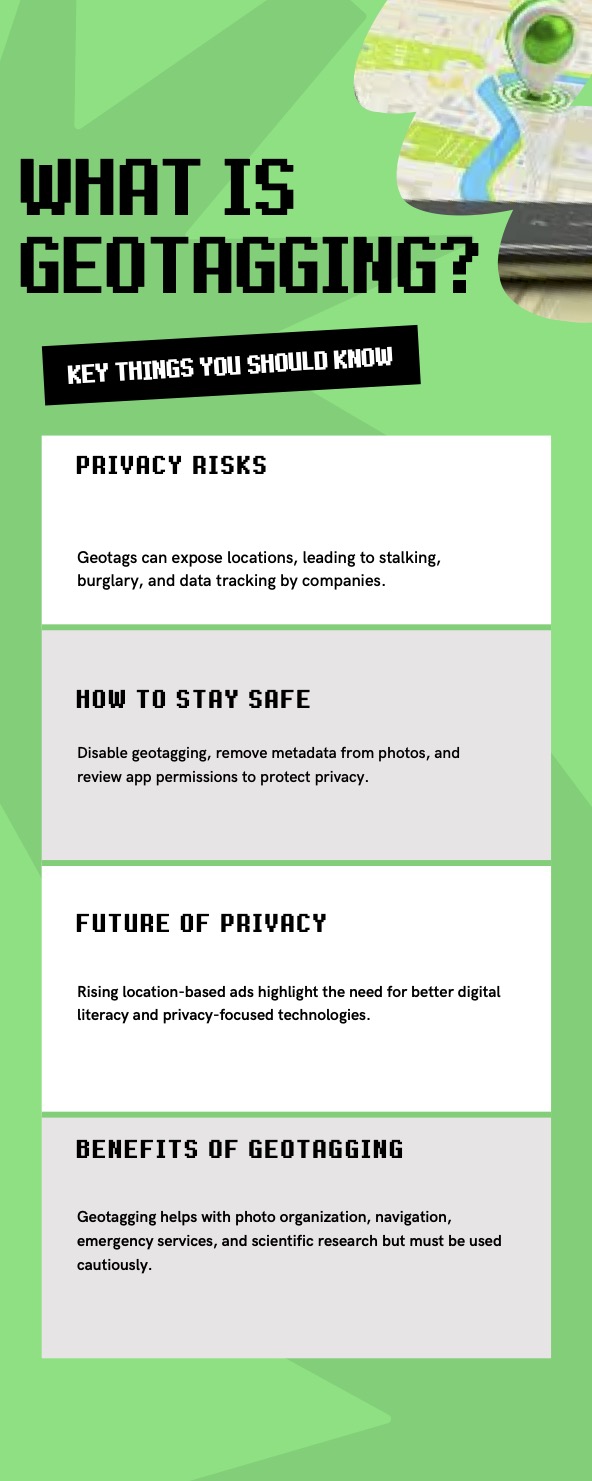
Conclusion
Geotagging can be a double-edged sword. While it provides convenience and organization, it also poses significant privacy risks. By taking proactive steps—such as disabling geotagging, and reviewing privacy settings—you can enjoy the benefits of location-based services without compromising your safety. Stay informed, stay vigilant, and always think twice before sharing your location online.
Images by Freepik.
Share this post
Leave a comment
All comments are moderated. Spammy and bot submitted comments are deleted. Please submit the comments that are helpful to others, and we'll approve your comments. A comment that includes outbound link will only be approved if the content is relevant to the topic, and has some value to our readers.

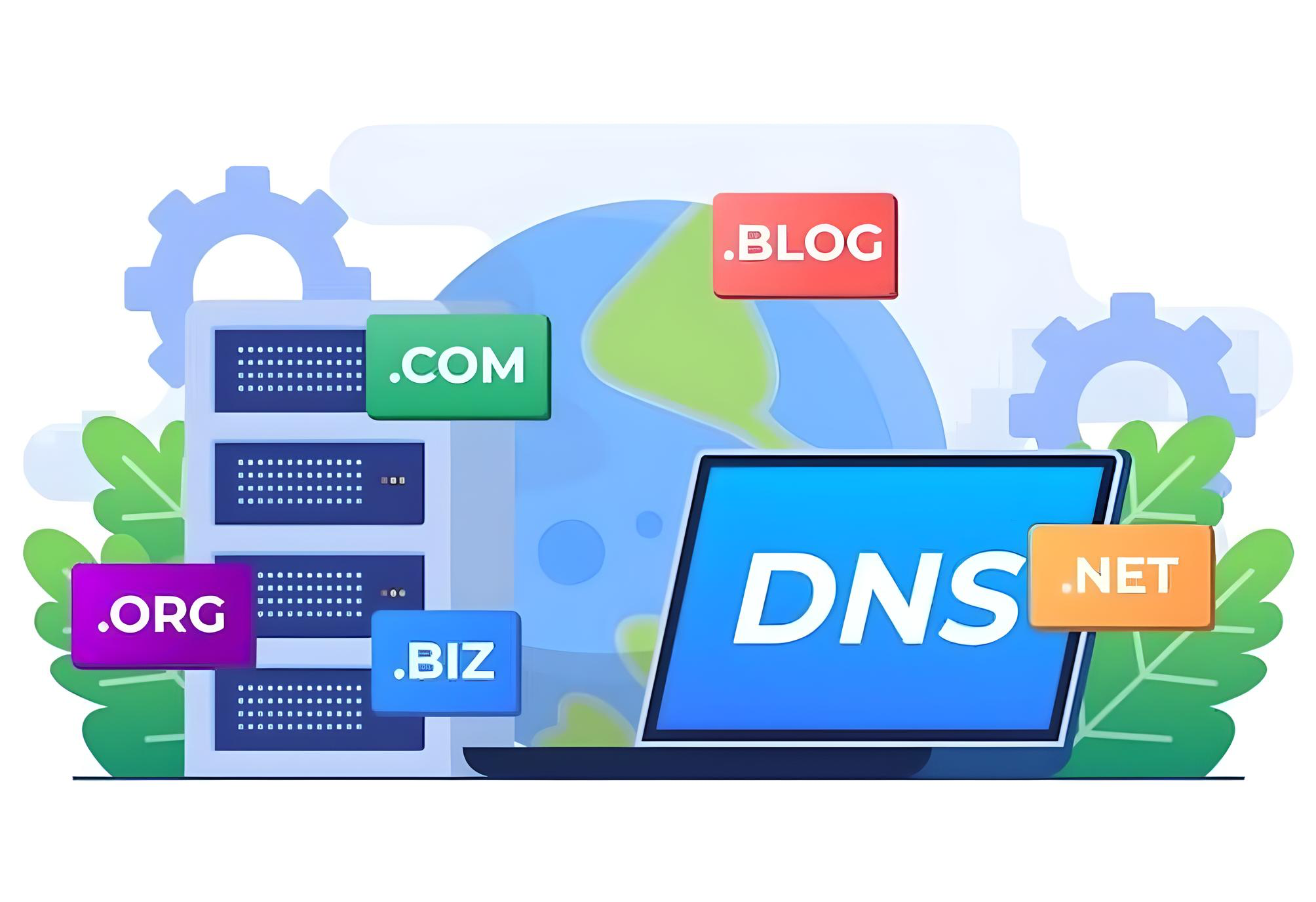

Comments (0)
No comment